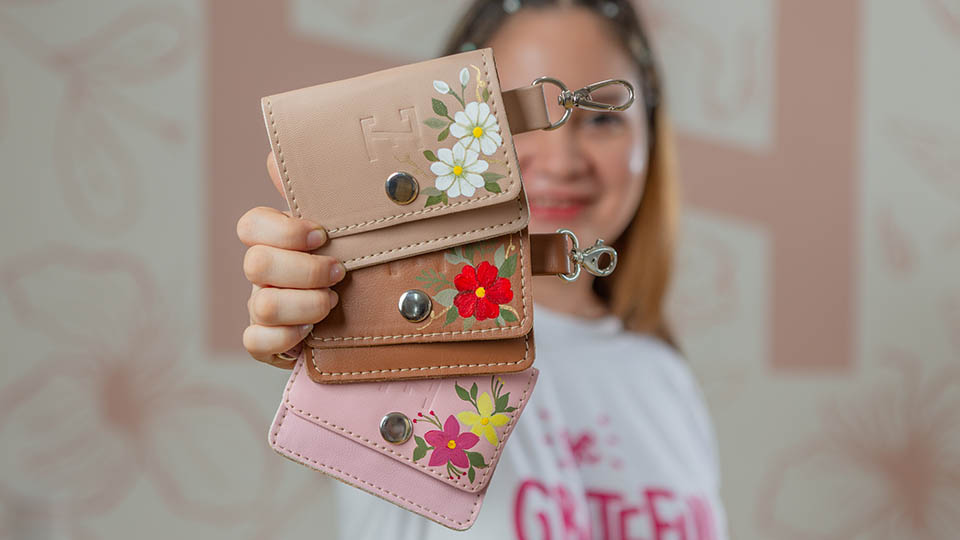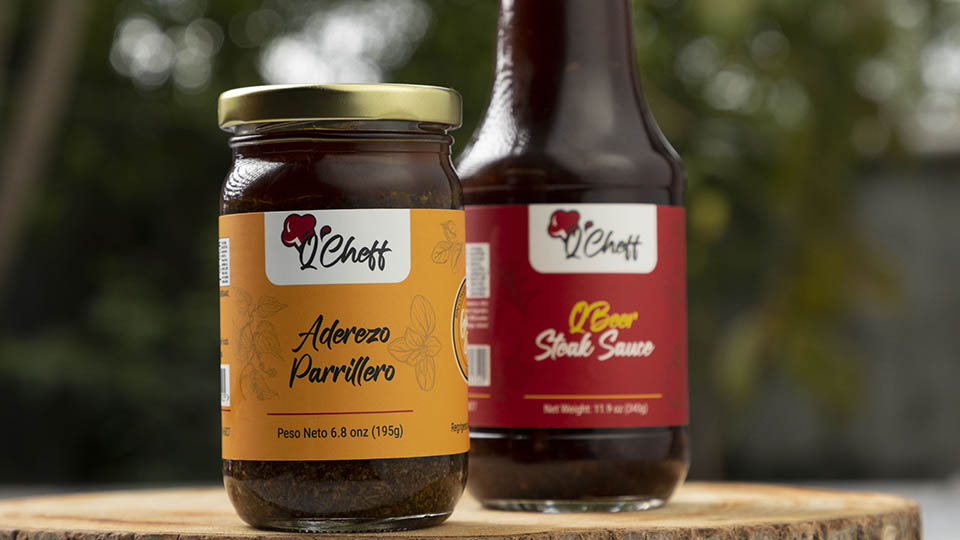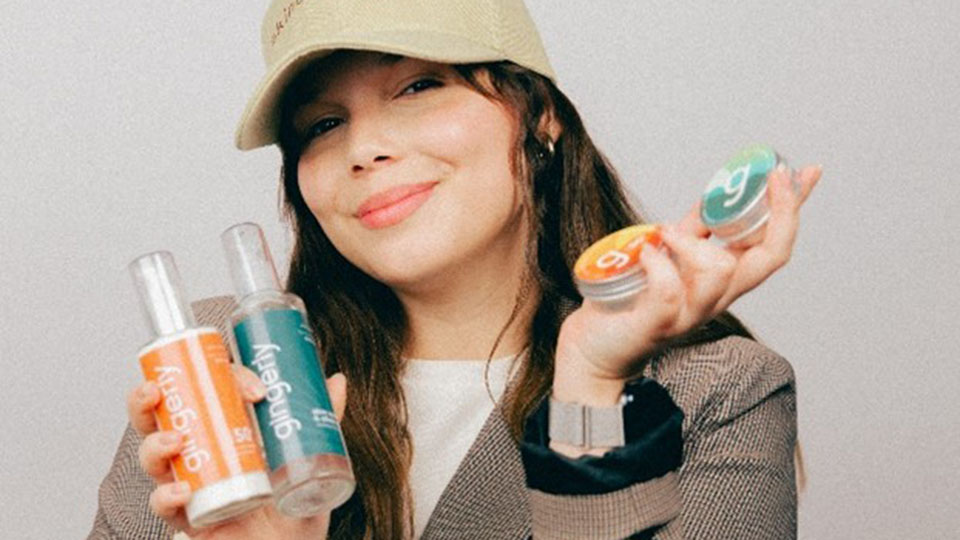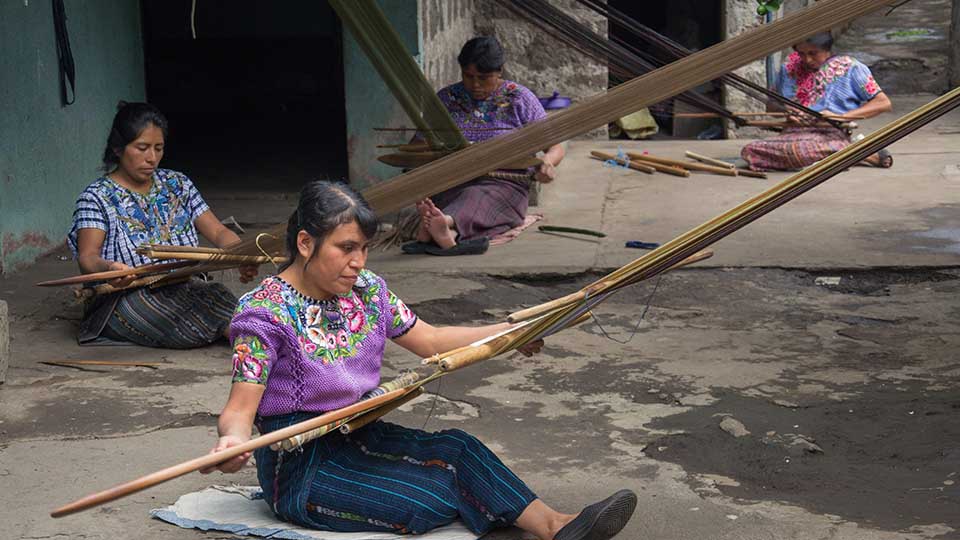That the popularity of cycling has soared in recent years is an established fact, with the global bicycle market projected to grow from US $82.50 billion in 2022 to US $127.83 billion by 2029.
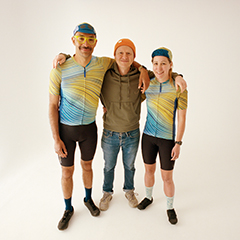
Not only is going for a pedal fun, but it’s good for the environment, your wallet, and your physical and mental health, so millions of people are doing it and more join them by the day.
Cycling was on the up before Covid-19 came knocking, but the pandemic gave it a shot in the arm as the world’s locked-down masses sought fresh air, freedom, and exercise.
That spike in interest didn’t go unnoticed by British entrepreneur and bike lover Ed Bartlett, who opted to brave the supply chain mayhem of 2020 and launch his boutique cycling apparel company, Kostüme.
Custom Cycling Clothing with Gender Inclusivity in Mind
As a lifelong, fashion-conscious cyclist, Ed knew the risks. Besides the pandemic-led logistics headaches, the bikewear market is crowded with established cycling wear brands competing for what remains—despite the sport’s boom—something of a niche, albeit a $5bn one.

From the outset, he wanted Kostüme to be different, not just because that way lay success, but because he saw that the wider industry was guilty of the ugliest and most environmentally negligent practices of so-called ‘fast fashion’.
He explained: ‘I couldn’t find kit that fitted, and what there was seemed exclusive, male targeted and racing focused, which didn’t suit me or the people I was riding with, half of whom are women. I had no intention of starting just another cycling brand—there are already dozens of them, but none is doing things the way we are. Rather than competing on their terms, we’re trying to change the space and compete on our own terms.’
Sustainable Cycling Clothing - Putting planet before profits
Kostüme’s planet-first model entails producing innovative yet attractive apparel from recycled materials through independent, family-run factories in Europe. But the sustainability imperative is writ largest in the fact that Kostüme’s cycling clothes are only available to pre-order and released in micro-batches, called ‘edits’.
‘There are big problems with sustainability and greenwash in this business,’ Ed said. ‘So much is being turned out on sales forecast guesswork and ends up in landfill or incinerated. One of the best ways to be more sustainable as a business is just to make less stuff.’
Unlike the traditional stack-and-chuck approach, where vendors build overlarge stocks to avoid customer dissatisfaction at any cost, Kostüme generates almost no waste because every item is sold before it leaves the factory.
Made-to-Order Cycling Apparel – Quality is Worth the Wait
Can a young company change old consumer habits?
However, this formula does bring different commercial challenges, such as banking on a customer base that’s prepared to wait longer for its purchases to drop on the doorstep.
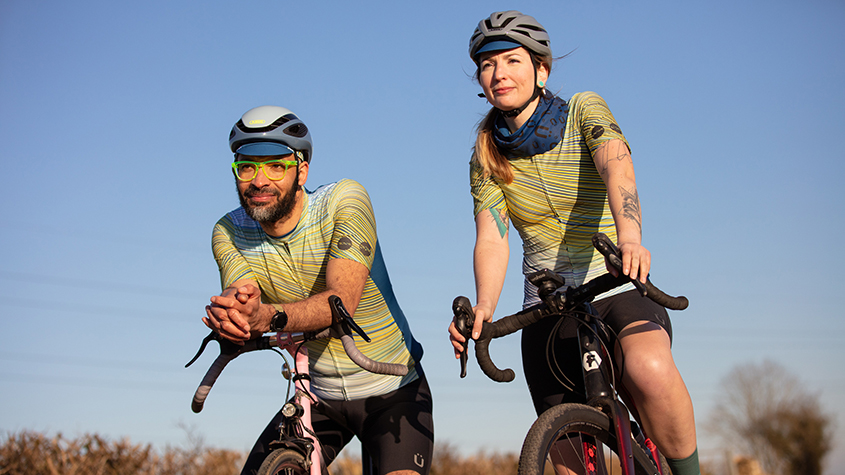
Ed said: ‘I’d seen the model work before with a brand in the USA, which was sourcing rare, craft denims and making pre-order jeans for a highly discerning clientele successfully, despite zero advertising spend. I believed cyclists, who are quite tribal, share some of this discernment, and that word-of-mouth would be a powerful sales driver. I did six months of market research to understand if consumers would be prepared to wait six to eight weeks for high quality, measurably more sustainable cyclig kit featuring exclusive one-off designs, and 100% of respondents said they would.’
Cycling Gear Made from Quality Textile and Leftover Fabric
Waste not, want not—cycling, recycling, and upcycling
Kostüme says it’s the only cycling company in the world making bib shorts (the one-piece shorts-braces worn by cyclists) from an expensive and high-performing Italian material currently only found in haute couture houses most people can’t afford.
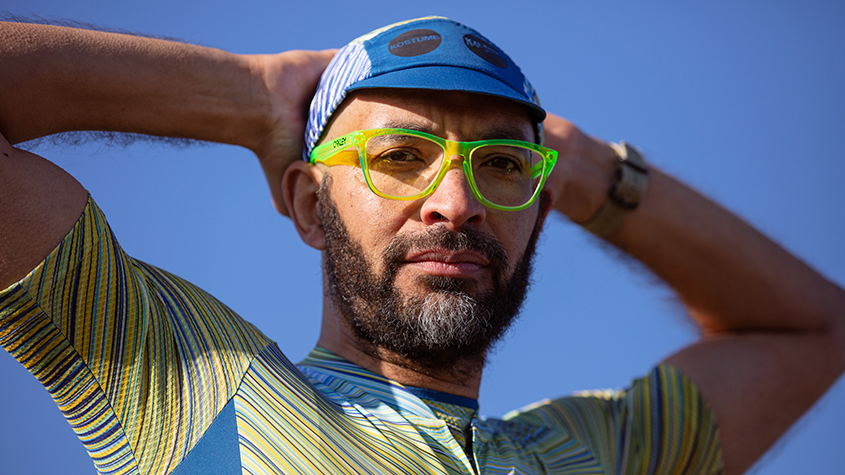
Explaining how this is possible without engendering sky-high retail prices, Ed said the direct-to-customer model means no warehousing costs, and pre-ordering means there’s no need to factor wastage into his outlay.
‘This all leaves us with a higher profit margin, which allows us to plan for and use the very best textiles around,’ he said. ‘The natural rubber-based elastic in our cycling caps costs more than it costs to produce most caps on the market. We’re also using less of the fabric to minimize manufacturing waste, where typically a lot of offcuts are simply discarded. We share fabric across the range, so the elasticated band in our arm and leg cycling warmers is made from the bib short offcuts, and the neck warmer and cap are from offcuts of the cycling jerseys. Those are the choices we’re making, and we calculate that we use 50% less unique fabric than our competitors.’
Kostüme Artist Series Cycling Clothing Collections
The intersection of art and cycling
Ed describes Kostüme as ‘the convergence of multiple passions’ in his life. His past includes video game development, advertising and most recently art curation, which has armed him with a contact book replete with names of notable artists.
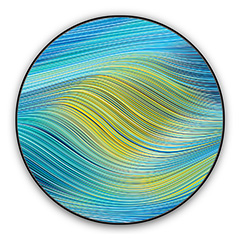
These connections lie behind another aspect that makes Kostüme stand out: the edits carry stunning designs by established artists from Ed’s network, meaning Kostüme’s cycling attire serve as a mobile gallery.
He said: ‘When Covid happened all these artists I’d been working with couldn’t exhibit or sell their work. This is a way for the artists to extend their reach into a different space. We do it very credibly—all the assets are bult around the artists and each campaign is treated like an exhibition.’
Kostüme’s inaugural range featured a swirling design by noted duo Kai & Sunny, and limited to just 350 units, making it something of a collector’s piece. The next artist series cycling clothing collection, due for release in spring 2023 has been designed by emerging London-based sculptor and printmaker, Alice Irwin.
Ed added: ‘Kostüme is not just about working with the likes of Damien Hirst, but about finding the next Damien Hirst. We want to help artists break out and achieve success by raising their profile in a mutually beneficial arrangement.’
Copyright of Kostüme Clothing Designs
Designs within designs – who owns the copyright?
Ed’s background means he’s familiar with tech patent applications, but he admits the process of protecting his own consumer brand was new to him and a steep learning curve.
‘I filed applications in key territories and categories, and registered Kostüme as a trademark in the UK, then I worked with an IP lawyer to help with the EUIPO and WIPO applications, so we’ve registered in what we see as prime cycling markets: USA, Canada, Australia, New Zealand, Europe, Japan.’
Working with artists presents an additional IP dimension to Kostüme’s products, since the artwork in the while the cycling clothes that bear them are registered separately under industrial design protection.
Like a gallery, Kostüme commissions and buys the original artworks, but the artists retain the copyright and license it back to Kostüme for a set number of products. And under the terms of their agreement, each piece of cycling clothing contains a credit for the artist.
To prevent counterfeiters from stealing the designs, Ed is looking at ways to provide a unique identifier with each item sold, either physical or digital, using watermarking or blockchain technology. However, before going in that direction he wants to ensure it doesn’t impact his overall sustainability, which is the number one priority.
Ed explained: I’d rather be 50% more sustainable and have 20% knock-offs on the market than sacrifice our sustainability for profits.’
